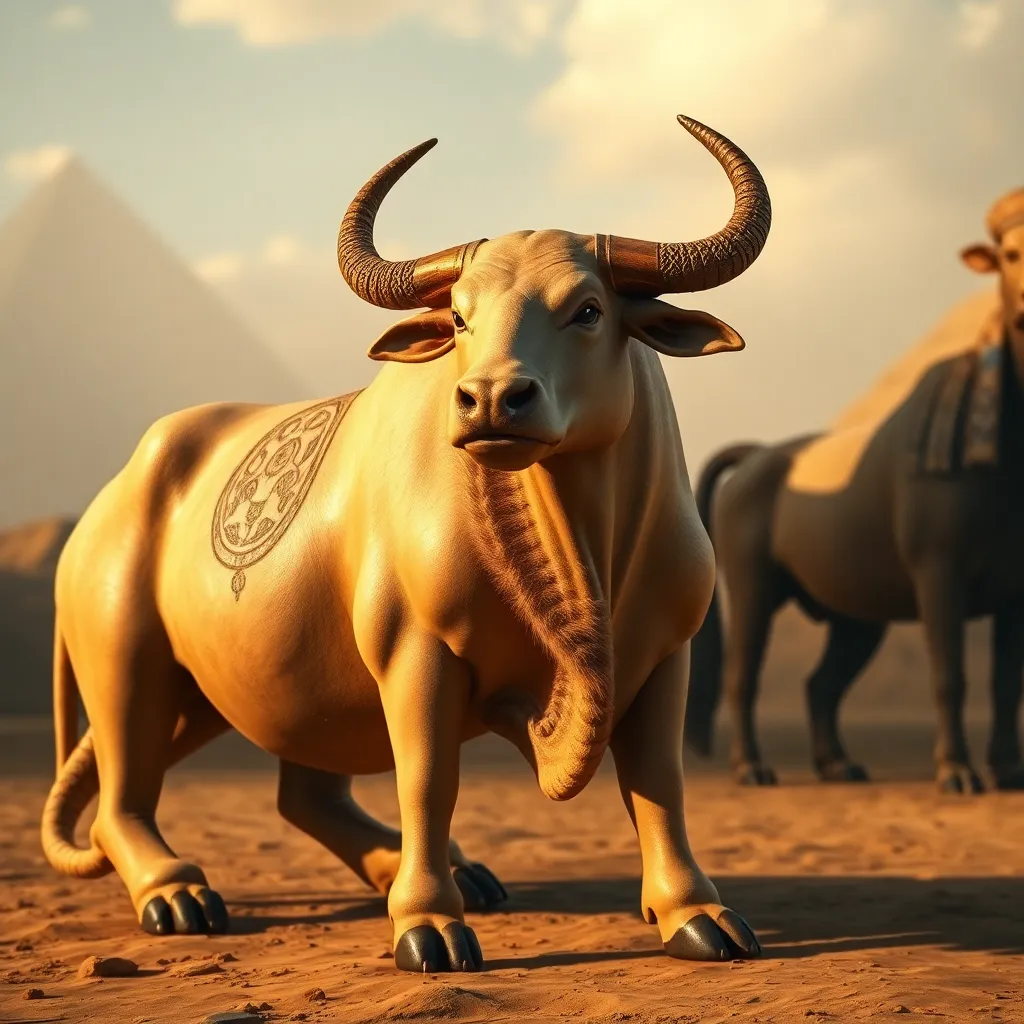Apis Bull Worship: Rituals and Significance in Ancient Egypt
I. Introduction
The Apis Bull holds a prominent place in Ancient Egyptian culture, revered not just as an animal but as a manifestation of divine power and fertility. This sacred bull was associated with several deities, primarily Ptah, the god of creation and craftsmanship. The worship of animals, such as the Apis Bull, formed a crucial aspect of ancient religions, symbolizing the connection between the divine and mortal realms.
This article aims to explore the historical context, symbolism, ritual practices, and the eventual decline of Apis Bull worship, shedding light on its significance within the fabric of Ancient Egyptian society.
II. Historical Context of Apis Bull Worship
The origins of the Apis Bull in Egyptian mythology can be traced back to the early dynastic period, where it began as a symbol of strength and fertility. The Apis Bull was believed to be an earthly manifestation of the god Osiris, and its worship evolved significantly over the centuries.
- Origins: The Apis Bull was first mentioned in the Pyramid Texts, signifying its importance from the start of Egyptian civilization.
- Evolution: As dynasties rose and fell, the worship practices surrounding the Apis Bull became more elaborate, reflecting changes in religious beliefs and societal structures.
- Cultural Influence: Interactions with neighboring cultures, such as the Nubians and later the Greeks, introduced new elements into the worship of the Apis Bull.
III. The Symbolism of the Apis Bull
The Apis Bull’s symbolism encompasses various aspects of life and afterlife beliefs, making it a multifaceted figure in Egyptian mythology.
- Fertility and Strength: The bull represented agricultural fertility and strength, vital for a civilization reliant on farming.
- Connection to Ptah: The Apis Bull was seen as a living embodiment of Ptah, linking the animal to the creative forces of the universe.
- Kingship and Divine Authority: The bull was also a symbol of kingship, believed to confer divine authority and protection to the pharaohs.
IV. Ritual Practices Associated with Apis Worship
Worship of the Apis Bull involved a variety of rituals and ceremonies that underscored its sacred status.
- Selection and Identification: The Apis Bull was identified by specific markings and was selected through a rigorous process, ensuring it met the spiritual criteria.
- Ceremonies and Festivals: Major festivals, such as the “Feast of the Apis,” included processions, music, and feasting, where the bull was paraded before the people.
- Daily Rituals and Offerings: Priests performed daily rituals, offering food, incense, and prayers to honor the Apis Bull and seek its blessings for fertility and prosperity.
V. The Role of the Serapeum
The Serapeum, located in Saqqara, served as a significant site for Apis Bull worship and burial.
- Description: The Serapeum housed the mummified remains of the Apis Bulls, constructed as a grand burial complex that reflected the importance of these animals.
- Significance of Burial Practices: The burial practices were elaborate, emphasizing the belief in the afterlife and the bull’s role in connecting the earthly realm to the divine.
- Archaeological Findings: Excavations at the Serapeum have revealed numerous artifacts, including sarcophagi and inscriptions, providing insight into the rituals associated with Apis worship.
VI. The Apis Bull in Art and Iconography
The Apis Bull was widely represented in Egyptian art, serving both religious and cultural functions.
- Depictions in Art: The bull was commonly depicted in sculptures, reliefs, and paintings, often shown alongside deities or in ceremonial contexts.
- Symbolic Elements: Iconographic elements, such as the solar disk and the ankh, were frequently associated with the Apis Bull, enhancing its symbolism of life and divinity.
- Influence on Later Cultures: The imagery of the Apis Bull influenced later cultures, including Greco-Roman art, where similar motifs were adopted and adapted.
VII. Decline of Apis Bull Worship
Despite its significance, the worship of the Apis Bull began to decline, influenced by various factors.
- Declining Practice: The rise of monotheistic beliefs and the diminishing power of the priesthood contributed to the decline of animal worship.
- Foreign Invasions: Invasions by foreign powers, such as the Persians and Greeks, disrupted traditional practices and introduced alternative religious beliefs.
- Legacy: Although Apis worship waned, elements of its legacy persisted, influencing later religious practices in Egypt.
VIII. Conclusion
The worship of the Apis Bull in Ancient Egypt was a profound expression of the civilization’s religious and cultural identity. Its significance as a symbol of fertility, strength, and divine authority highlights the intricate relationship between humans and the divine in ancient belief systems.
Reflecting on the cultural and religious impact of animal worship, it becomes evident that practices like the worship of the Apis Bull were not merely rituals but vital components of a society’s worldview. Preserving the understanding of such ancient practices and beliefs is essential for appreciating the complexities of human history and spirituality.




